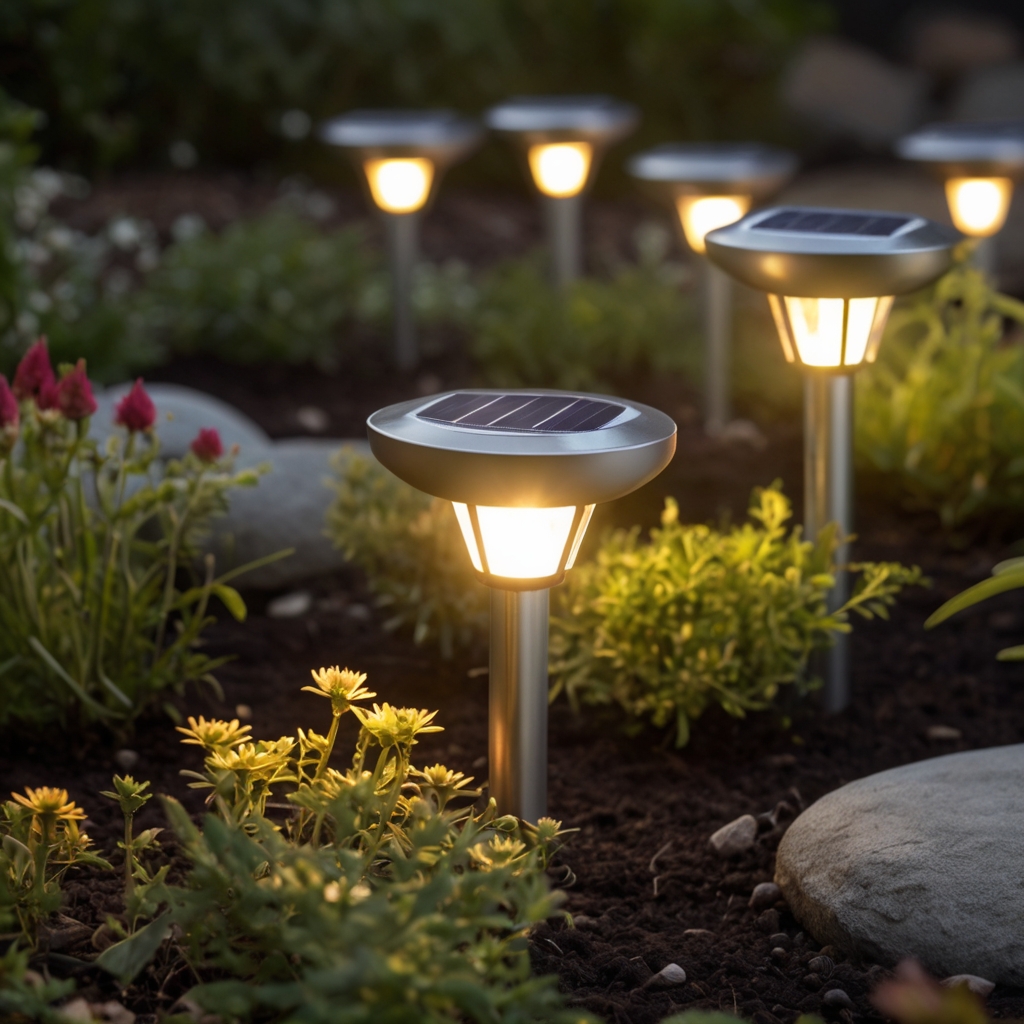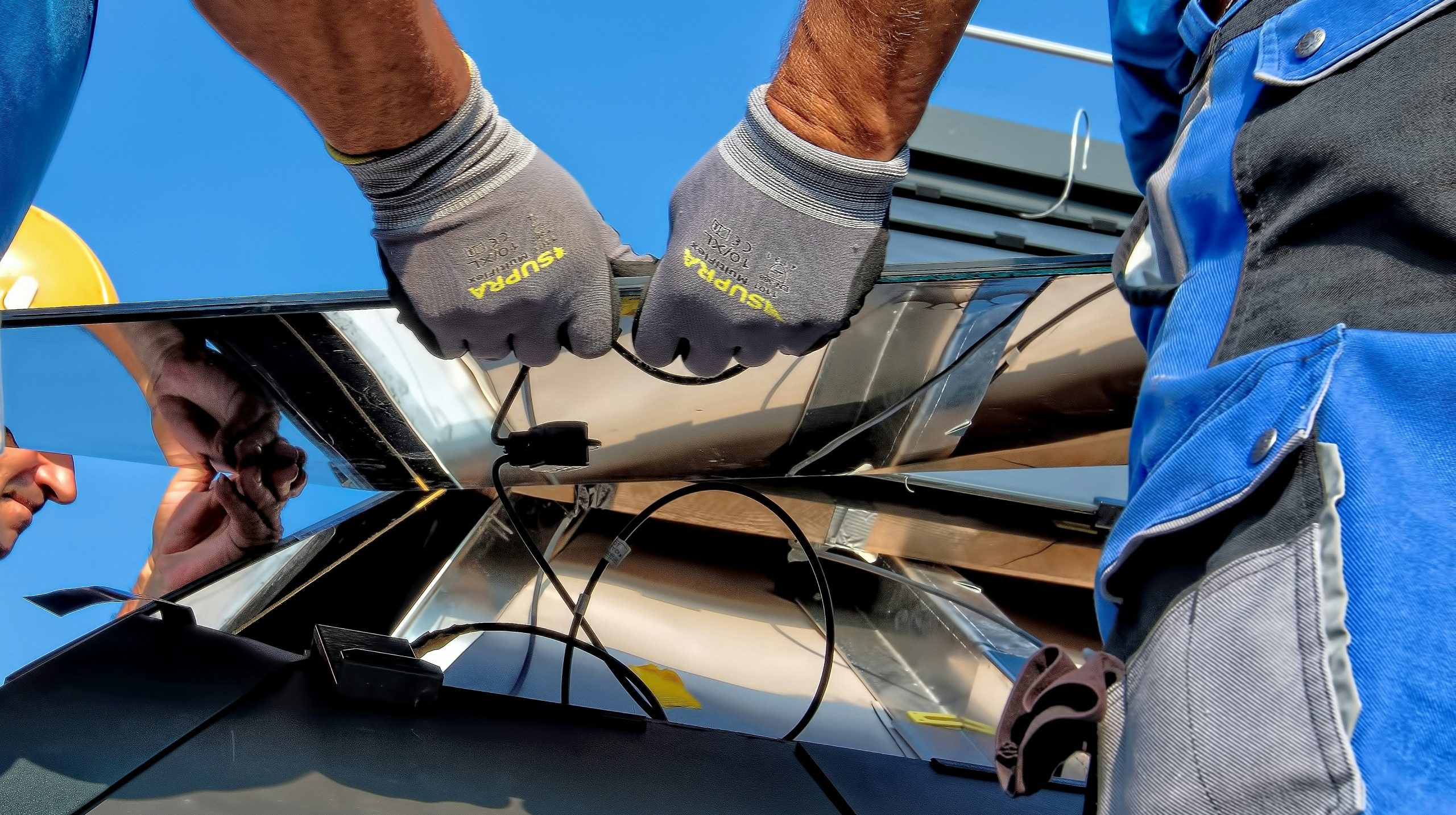Have you ever wanted to add a touch of warmth and ambiance to your outdoor space? Well, look no further! DIY solar path lights are the perfect solution. But you may be wondering, what are the essential components needed to build these fascinating lights? Don’t worry, we’ve got you covered.
First and foremost, you’ll need solar panels. These small devices are responsible for converting sunlight into energy, which will then power the lights. The size and wattage of the solar panels will depend on the specific needs of your project, but generally, a higher wattage panel will generate more power for your lights. Next, you’ll need batteries to store the energy generated by the solar panels. These batteries will ensure that your path lights can still illuminate even when the sun goes down. Opt for rechargeable batteries, as they are more cost-effective and environmentally-friendly. Finally, you’ll need LED lights, which are energy-efficient and long-lasting. These lights come in various colors and styles, allowing you to customize the look of your path lights to your personal taste. In our upcoming article, we’ll delve deeper into each component and provide step-by-step instructions for building your own DIY solar path lights. Stay tuned!

Solar Panel
Monocrystalline vs Polycrystalline
When it comes to choosing a solar panel for your DIY solar path lights, you have two main options: monocrystalline and polycrystalline. Monocrystalline solar panels are made from a single crystal structure, which gives them a sleek and uniform appearance. These panels tend to be more efficient and have a higher power output. On the other hand, polycrystalline solar panels are made from multiple fragments of silicon crystals, resulting in a slightly lower efficiency but also a more affordable price tag. Ultimately, the choice between monocrystalline and polycrystalline solar panels will depend on your budget and preferences.
Size and Wattage
The size and wattage of the solar panel will determine how much energy it can generate and how quickly it can charge your solar path lights. It’s important to choose a solar panel that is large enough to meet your lighting needs, but also consider the available space for installation. The wattage of the solar panel should match or exceed the wattage requirement of your lights to ensure optimal performance.
Efficiency and Output
Efficiency is an important factor to consider when selecting a solar panel for your DIY solar path lights. A higher efficiency rating means that the panel can convert more sunlight into usable electricity. This will result in a more efficient charging process and ultimately, brighter and longer-lasting lights. Additionally, consider the panel’s power output, which is typically measured in watts. A higher power output means the panel can generate more electricity, allowing it to power multiple lights or even other devices.
Battery
Battery Capacity
The battery plays a crucial role in solar path lights as it stores the energy generated by the solar panel during the day to power the lights at night. The capacity of the battery determines how long the lights can stay illuminated. It is important to choose a battery with sufficient capacity to meet your desired lighting duration. Consider factors such as the number of hours you want the lights to stay on and the amount of energy they consume. A higher battery capacity will provide more energy reserves and ensure your lights stay bright throughout the night.
Battery Type
There are different types of batteries commonly used in solar path lights, including lead-acid, lithium-ion, and nickel-metal hydride (NiMH) batteries. Lead-acid batteries are affordable but require regular maintenance and can be bulky. Lithium-ion batteries, on the other hand, are lightweight, have a longer lifespan, and require minimal maintenance. NiMH batteries are a more environmentally friendly option but may not last as long as lithium-ion batteries. Consider the specific requirements of your solar path lights, such as size and lifespan, when choosing the appropriate battery type.
Charge Controller
A charge controller is an essential component that regulates the flow of electricity from the solar panel to the battery. It prevents overcharging and damage to the battery by ensuring a steady and controlled charging process. A charge controller also helps extend the life of the battery and optimize the overall performance of your solar path lights. When selecting a charge controller, consider its compatibility with your solar panel and battery, as well as its features such as overcharge protection and load control options.
LED Lights
Brightness and Color Temperature
LED lights are the most common choice for solar path lights due to their energy efficiency and long lifespan. When selecting LED lights for your DIY project, consider the brightness and color temperature. Brightness is measured in lumens and determines how intense the light output will be. Color temperature refers to the color appearance of the light, ranging from warm white to cool white. Choose the level of brightness and color temperature that suits your desired lighting ambiance.
Lighting Angle
The lighting angle of the LED lights determines the spread and direction of the light. For solar path lights, it is important to choose lights with a wide lighting angle to ensure sufficient illumination along the path. Consider lights with adjustable lighting angles to allow for customization based on your specific installation requirements.
Waterproofing
Since solar path lights are exposed to outdoor elements, it is crucial to choose LED lights that are waterproof or at least weather-resistant. Look for lights with an IP rating (Ingress Protection) to ensure they can withstand rain, snow, and other environmental conditions. Proper waterproofing will help prolong the lifespan of your lights and ensure reliable performance in any weather.
Enclosure
Material and Design
The enclosure of your solar path lights serves as protection against the elements and also contributes to the overall aesthetics. Common materials for enclosures include stainless steel, aluminum, and plastic. Stainless steel is durable and resistant to rust, making it a popular choice. Aluminum is lightweight and also resistant to corrosion. Plastic enclosures are more affordable but may not have the same level of durability as metal options. Consider the design and style of the enclosure to ensure it complements your outdoor aesthetics.
Sealing and Protection
In addition to the material and design, proper sealing and protection are crucial elements of the enclosure. Ensure that the enclosure is well sealed to prevent moisture and dust from entering, which can damage the components inside. Look for features such as rubber gaskets or silicone seals to ensure a tight and reliable seal. Proper sealing and protection will contribute to the longevity and performance of your solar path lights.

Wiring and Connectors
Wire Gauge
The wire gauge refers to the thickness or diameter of the wire used to connect the different components of your solar path lights. It is important to choose the appropriate wire gauge to ensure efficient energy transfer and minimize power loss. A thicker wire with a lower gauge number will have less resistance and allow for a more efficient flow of electricity. Consider the distance between the solar panel, battery, and lights when determining the appropriate wire gauge for your DIY project.
Connectors and Terminals
Proper connectors and terminals are essential for secure and reliable connections between the different components of your solar path lights. Choose connectors and terminals that are compatible with the wire gauge used in your setup. Consider options such as MC4 connectors or screw terminals that provide a secure and weather-resistant connection. Good connectors and terminals will ensure efficient energy transfer and minimize the risk of loose or faulty connections.
Mounting
Post or Stake
Mounting options for solar path lights include posts or stakes that are inserted into the ground. Consider the stability and adjustability of the mounting option when choosing the right one for your installation. Posts provide stability but may not be adjustable once installed. Stakes, on the other hand, offer flexibility and easy relocation if needed. Choose a mounting option that suits your specific needs and ensures the proper positioning and stability of your solar path lights.
Adjustability and Stability
Adjustability and stability are important factors to consider when mounting your solar path lights. Adjustable mounting options allow you to easily change the angle and direction of the lights for optimal illumination. Stability is crucial to ensure your lights remain in place even in windy or harsh weather conditions. Look for mounting options that offer both adjustability and stability to maximize the performance and functionality of your solar path lights.

Sensor and Control
Motion Sensor
Adding a motion sensor to your DIY solar path lights can enhance energy efficiency and provide added security. A motion sensor detects movement and triggers the lights to turn on only when someone is nearby. This helps save energy by eliminating unnecessary illumination when there is no activity. Additionally, it can act as a deterrent to potential intruders by activating the lights when motion is detected. Consider adding a motion sensor to your solar path lights for convenience and increased efficiency.
Timer and Dimming Function
Some solar path lights come with additional control features such as timers and dimming functions. Timers allow you to set specific on and off times for the lights, providing customized lighting schedules. Dimming functions allow you to adjust the brightness levels of the lights according to your preferences and lighting needs. These control features provide flexibility and customization options, allowing you to create the perfect lighting ambiance for your outdoor space.
Maintenance
Cleaning and Inspection
Regular cleaning and inspection are important for maintaining the performance and longevity of your solar path lights. Clean the solar panel to remove any dirt or debris that may obstruct sunlight absorption. Inspect the battery and enclosure for any signs of damage or wear. Check the wiring and connectors for secure connections and proper insulation. Regular cleaning and inspection will ensure that your solar path lights operate at their best and last for years to come.
Replacement Parts
Over time, certain components of your solar path lights may require replacement. This can include the battery, LED lights, or connectors. It is important to choose replacement parts that are compatible with your existing setup to ensure proper functionality. Keep track of the warranty and lifespan of your components to know when it’s time for replacement. Having replacement parts readily available will help you quickly address any issues and maintain the performance of your solar path lights.

Safety
Waterproofing
Waterproofing is an important safety consideration for outdoor solar path lights. Ensure that all components, including the solar panel, battery, and LED lights, are properly sealed and protected against water ingress. This will prevent damage to the components and reduce the risk of electrical hazards. Choose lights with a high waterproof rating (IP rating) to ensure they can withstand various weather conditions and provide reliable performance.
Overcharging Protection
Overcharging protection is an essential safety feature for the battery of your solar path lights. A charge controller with overcharging protection will prevent the battery from being overcharged, which can lead to reduced battery lifespan and potential safety hazards. Ensure that your charge controller has this feature to protect your battery and ensure safe operation of your solar path lights.
Conclusion
Building DIY solar path lights is a rewarding and sustainable project that can enhance the ambiance and functionality of your outdoor space. By considering the essential components discussed in this article – solar panels, batteries, LED lights, enclosure, wiring, mounting, sensor and control, maintenance, and safety features – you can create a successful and long-lasting solar path lighting system. Remember to choose components that are suited to your specific needs and preferences, and follow proper installation and maintenance practices for optimal performance. Enjoy the benefits of DIY solar path lights and let them illuminate your pathways with renewable energy.






